
This California Department of Public Health memo provides up-to-date guidance to California’s schools on mitigating COVID-19 while learning in person. It describes mitigation strategies, as well as considerations for student mental and behavioral health, students with disabilities and other health needs, higher-risk activities, large events, visitors to schools, and boarding schools.
- Tools & School Guidance

This vaccination resource library curated by the National Rural Health Association includes conversation starters and toolkits for addressing health misinformation that can help employers share vaccine facts and improve vaccination access for employees and families.
- Tools & School Guidance

This fact sheet describes and explains how clinical trials and safety monitoring have demonstrated the safety of COVID-19 vaccines for children and teens, and addresses myths about receiving the vaccine.
- Tools & School Guidance

This blog post describes the importance of partnership-driven family engagement in designing academic and social/emotional COVID recovery interventions at the school level. Family engagement efforts can help address issues with interest, program eligibility, transportation, and scheduling that students may face in accessing such interventions.
- Tools & School Guidance

The Biden administration launched this website to enable better access to vaccines, tests, treatments, masks, as well as the latest updates on COVID-19. The website includes a Test-to-Treat locator that can help people access pharmacies and community health centers to get tested and receive appropriate treatments.
- Tools & School Guidance
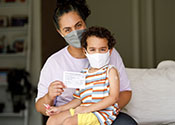
This website contains answers to vaccine-related FAQs in 7 languages, including information on how vaccines protect against variants and information about breakthrough infections. There is also a dedicated section for parents and caregivers, which includes information about how the COVID-19 vaccines work for kids, whether the vaccines are safe, and why doses are different for younger children.
- Tools & School Guidance

Using census data, researchers estimate that 167,082 children under 18—more than one out of every 450—lost a parent or other in-home caregiver to COVID-19. This report discusses the impacts of this loss on children and provides recommendations for addressing the clinical and economic needs of COVID-bereaved children.
- Tools & School Guidance

This guidance helps schools and families keep in-person learning safe and inclusive for students with disabilities. Strategies include leveraging the IEP processes to ensure protections are in place; implementing layered prevention strategies such as vaccinations, masking, and testing; and ensuring students receive education in both the safest and least restrictive environment.
- Tools & School Guidance

This toolkit for parents provides answers to frequently asked questions, talking points, tips, and other science-based information about COVID-19 and vaccines that can be used in conversations and shared in-person or through social media.
- Tools & School Guidance

This California Department of Public Health publication lays out steps that event operators can take to protect attendees from COVID transmission during large events. Specific guidance for k–12 school events, such as assemblies and dances, includes splitting events by cohort (e.g., grade level) when possible, hosting events outdoors (and, in particular, serving any food and beverages outdoors), and considering a pre-event testing requirement for attendees.
- Tools & School Guidance

This toolkit provides a range of newly updated resources from the U.S. Centers for Disease Control and Prevention as well as the Department of Health and Human Services COVID-19 Public Education Campaign to help increase COVID-19 vaccine uptake in schools and communities. The toolkit includes English- and Spanish-language resources for school and early childhood program leaders, teachers, parents, and parent leaders.
- Tools & School Guidance

This article identifies the need for schools and districts to plan for how to identify and accommodate students with long COVID, which is thought to be massively underdiagnosed. Schools and districts can help in part by growing their Individualized Education Plan and 504 committees and training staff to be aware of common symptoms (including fatigue and cognitive issues like brain fog and processing or memory issues) so they can refer students to school health teams for further evaluation.
- Tools & School Guidance
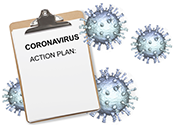
This webpage contains tools, templates, and step-by-step information on how to set up a school COVID-19 testing program in schools. It includes guidance on identifying testing teams, getting consent, setting up software, setting a testing schedule, and conducting contact tracing.
- Tools & School Guidance

This blog post describes 10 of the most important steps schools and districts can take to address challenges related to COVID in 2022–23. Topics include mitigation strategies, social and emotional challenges, academic recovery, and the role schools can play in disseminating health information.
- Tools & School Guidance

This website includes decision-making tools with guiding principles and mitigation strategies for school reopening.
- Tools & School Guidance

This website compiles resources for child care administrators and providers, including state-by-state information on vaccines, public health guidance, child care closures, and supporting emergency workers.
- Tools & School Guidance

This two-page fact sheet addresses issues of harassment and discrimination stemming from prejudice and unfounded fears about COVID-19 and explains what to do when a student experiences discrimination in school, including how to file a complaint with the Civil Rights Division.
- Tools & School Guidance
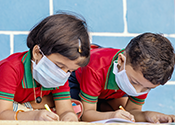
This guidance makes clear that masks should be worn indoors by all individuals over age 2 who are not fully vaccinated, especially in areas of moderate to high community transmission, and that transmission rates should be monitored to guide decisions on the use of prevention strategies.
- Tools & School Guidance
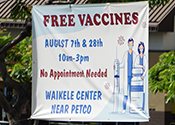
This detailed guide offers strategies for how to overcome vaccine hesitancy, such as the use of vaccine ambassadors and motivational interviewing, with concrete examples of these strategies in action.
- Tools & School Guidance

This FAQ provides key information about the safety, efficacy, and suggested timing of the recently released bivalent COVID booster shots, as well as vaccination information for children too young to receive the new boosters.
- Tools & School Guidance

This guidance from the state of California recommends a new group-tracing approach to replace contact tracing. The group-tracing approach allows for a quicker and broader response to cases identified in school settings, and involves notifying groups of students who spent more than 15 minutes with someone who tested positive for COVID-19 during their period of infectiousness. It also addresses implementing test-to-stay approaches for all exposed students. The website also contains a link to a sample notification letter that schools can adapt for their own use.
- Tools & School Guidance

This resource from the U.S. Department of Education details how school COVID recovery funding can be spent. It also provides exemplars related to COVID health and safety as well as academics, whole-child supports, and addressing teacher shortages.
- Tools & School Guidance

This toolkit has resources for organizations and individuals who want to help increase confidence in and uptake of COVID-19 vaccines among high school students. It includes toolkits such as fact sheets about COVID-19 and vaccines, sample text messages to use in outreach to students, tips for students to support vaccination efforts, and guidance on which masks to use and how to wear them correctly.
- Tools & School Guidance
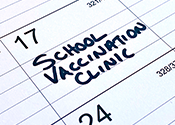
This resource provides action steps and resources for school leaders to support COVID-19 vaccine uptake and improve health literacy among staff, students, and families in their community, including setting up a school vaccination clinic and establishing partnerships with community health organizations.
- Tools & School Guidance

This website describes ways schools can improve ventilation using American Rescue Plan funds, including servicing or upgrading HVAC systems, repairing windows, and purchasing MERV-13 filters.
- Tools & School Guidance

This piece from The Conversation lays out the evidence base for improving ventilation systems in schools and explains how this can help prevent COVID as well as other pediatric health conditions.
- Tools & School Guidance
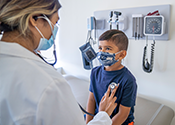
A new series of guidelines, linked in this press release, have been published in the American Academy of Physical Medicine and Rehabilitation to help pediatricians treat long COVID in children. The guidelines include lists of symptoms and strategies for evaluating them as well as information on how they can be treated.
- Tools & School Guidance

This webpage contains COVID-19-related resources using Chinese, Korean, Somali, Portuguese, Tagalog, Arabic, and other languages. Resources include vaccine fact sheets, treatment options, and information on testing.
- Tools & School Guidance

The Learning Network helps school and district leaders start or strengthen school COVID-19 testing and vaccination programs. Their website includes key takeaways, video clips, and resources from a series of webinars about running a school COVID-19 testing program. The website also includes an FAQ on using ESSER funding for testing and vaccination at K-12 public schools.
- Tools & School Guidance

This website consolidates existing guidance; provides resources on funding, mitigation, and transparency; and explains the science behind the state’s reopening plan.
- Tools & School Guidance
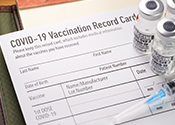
Through this website, schools districts can apply to the California K-12 School Rapid Antigen Testing Program, which provides free testing supplies, training, and software to schools to support COVID-19 testing.
- Tools & School Guidance
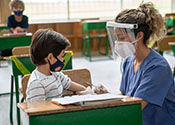
This toolkit provides planning and communication resources for schools and immunization partners on school located vaccination clinics. The Association of Immunization Managers was founded in 1999 and is made up of members who are leaders of state, local, and territorial immunization programs in the United States.
- Tools & School Guidance
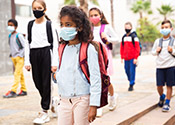
This fact sheet from the Kennedy Krieger Institute identifies almost two dozen specific accommodations that should be considered for students dealing with long COVID. Each accommodation focuses on conserving energy and prioritizing demands in school.
- Tools & School Guidance

California encourages parents to test their children for COVID-19 as they return to school from break and to share the test results with their local health department. This website contains resources for parents, including a fact sheet with steps they should follow to conduct at-home COVID-19 testing as well as social media images and messages in English and Spanish for districts and schools to share.
- Tools & School Guidance

The U.S. continues to lag in COVID-19 booster uptake, which is recommended for everyone 5 and older. This article provides a rationale for the protective effects of booster shots and describes what may change about booster composition (e.g., boosters covering multiple strains of the virus) and timing moving forward.
- Tools & School Guidance

This FAQ addresses common questions that parents may have about the safety of COVID-19 vaccines for children. It explains how mRNA vaccines (such as the Pfizer and Moderna vaccines) work and the research that explains why vaccines are now considered safe for young children.
- Tools & School Guidance

This resource explains why regular testing, in addition to vaccinations, is an effective way to prevent the spread of COVID-19 and help keep schools open. It also introduces Test to Stay, which combines contact tracing and serial testing to allow individuals exposed to COVID-19 to remain in school if they do not test positive, even if they are not fully vaccinated.
- Tools & School Guidance